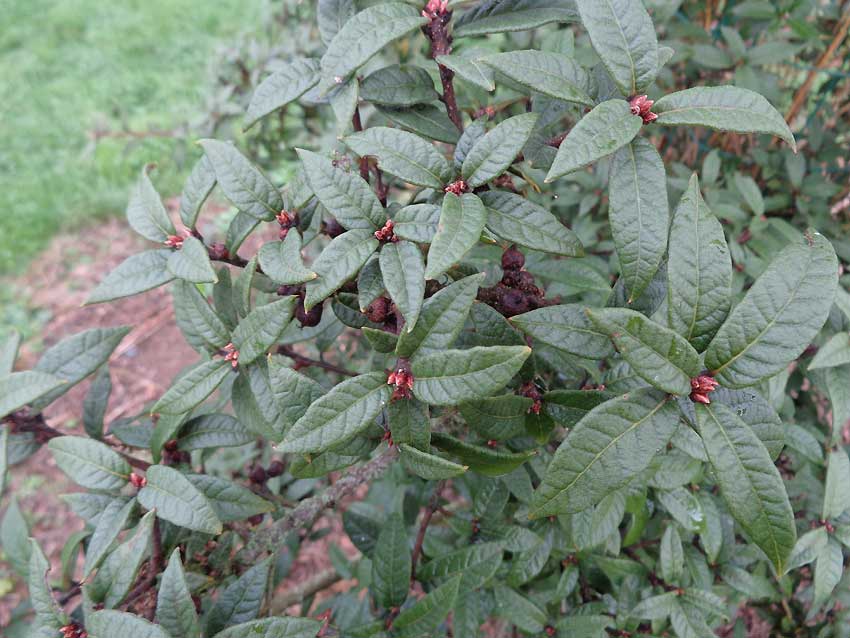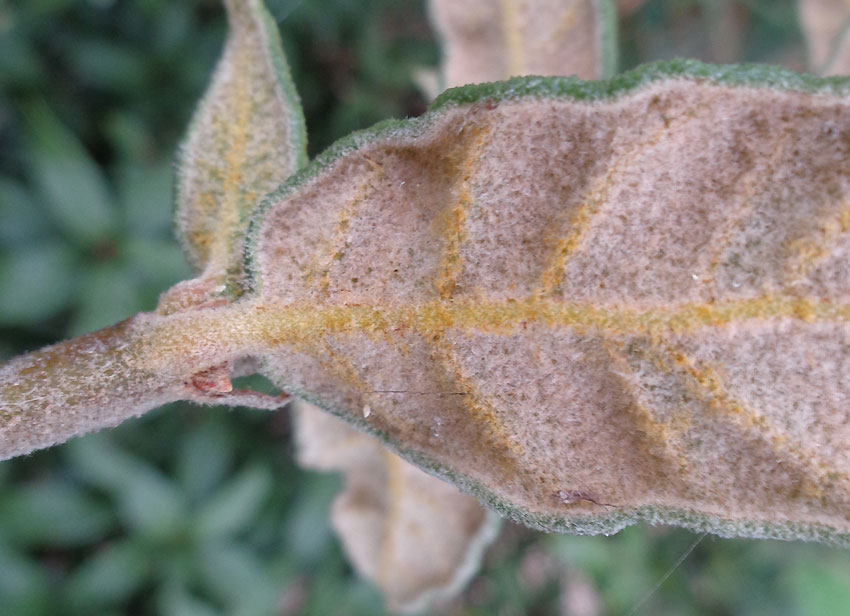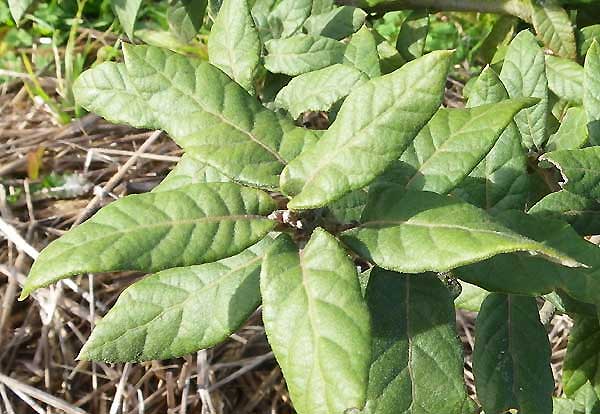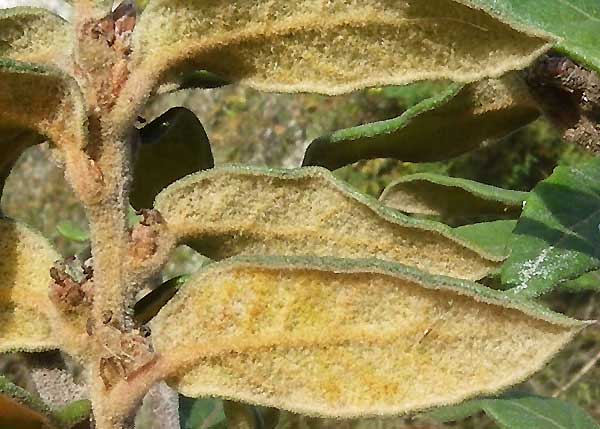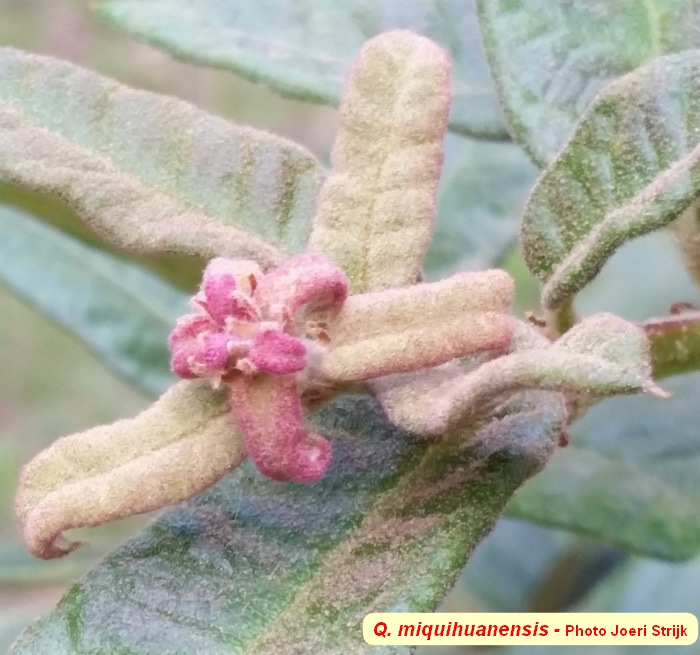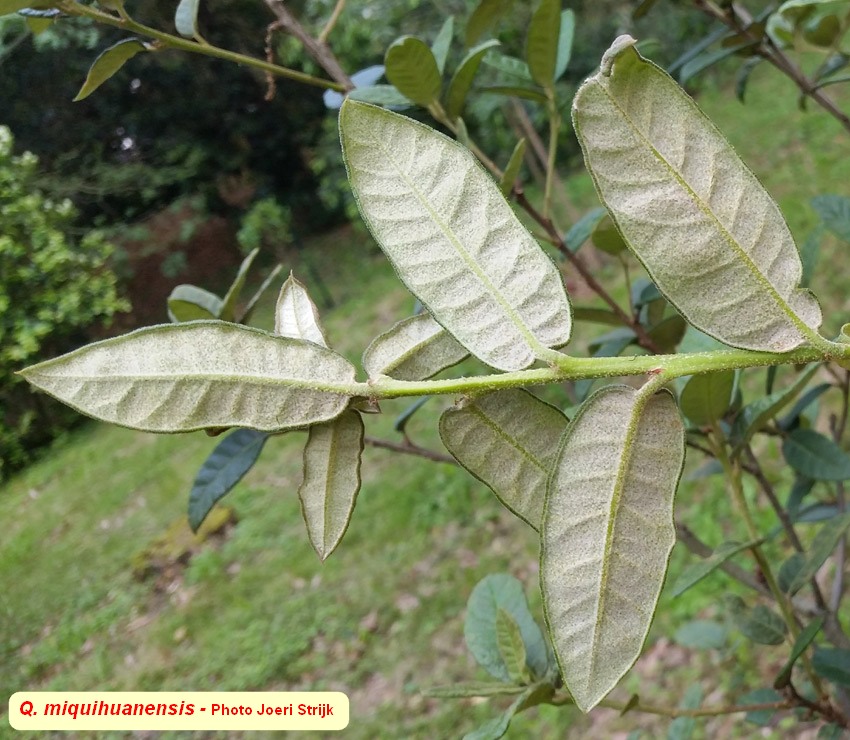| Quercus miquihuanensis | |
| Author | Nixon & C.H.Muller 1993 Brittonia 45: 152 |
| Synonyms | |
| Local names | |
| Range | Mexico
(Tamaulipas, Nuevo Leon) ; |
| Growth habit | usually
1.5 m tall, 2 m wide; |
| Leaves |
2-6
cm long, 1-2 wide; evergreen; thick, coriaceous, stiff; more or less
broadly elliptic or oval, sometimes lanceolate; apex acute to acuminate,
shortly bristle-tipped; base rounded or subcordate; margin more or less
thickened, revoluted, cartilaginous, entire, often undulate; dark green,
sometimes yellowish above, rough and wrinkled due to impressed secondary
and tertiary veins, glabrous or with minute, scattered, stellate hairs
especially near base; densely rusty woolly tomentose beneath, scratchable,
tomentum made of tangled fasciculate hairs and yellow, vermiform, glandular
ones; 5-10 vein pairs, curved, impressed above, prominent beneath; epiderm
papillose, somewhat bullate; petiole 0.3-0.9 cm long, tomentose;
|
| Flowers | in April-May; male inflorescence 2-3 cm long, with flowers 3-4 staminate and apiculate, hairless anthers; pistilate inflorescence 0.8-1.5 cm, with 1 to 2 pubescent flowers; |
| Fruits | small
acorn 0.8-1.2 cm long, ovoid, singly or paired on a short peduncle 4-20
mm long; cup shallow, enclosing 1/2 of the nut; maturing in 2 years in
September-October; |
|
Bark, twigs and |
bark
dark grey, smooth; twig 1.5-4.5 mm in diameter, tawny-greyish pubescent;
bud ovoid to subglobose, 2-4 mm long, glabrescent or not; |
| Hardiness zone, habitat | probably hardy zone 7; |
| Miscellaneous | --
Sub-genus Quercus, section Lobatae, Series Erythromexicanae; -- Threatened (IUCN Red List Category : EN). -- Related to Q.hypoxantha with which it forms the "Quercus hypoxantha complex", in association with Q.coahuilensis and Q.hintoniorum; |
| Subspecies and varieties |
|
| Pictures |
|
